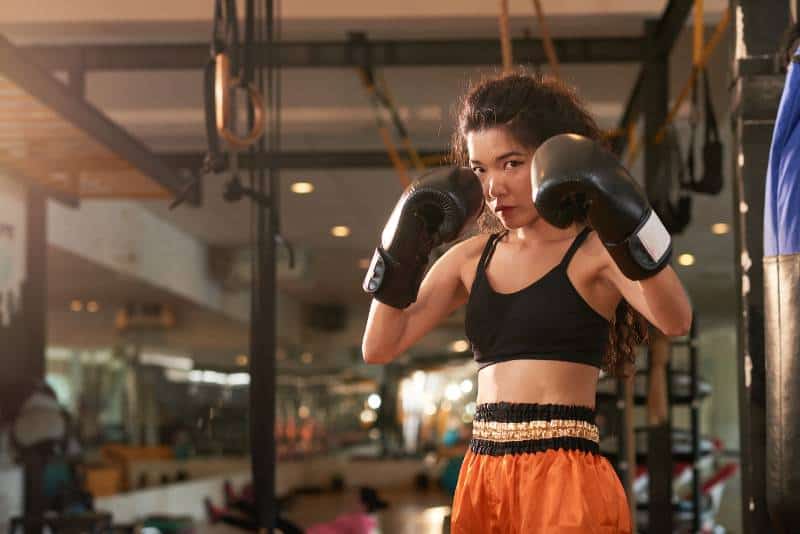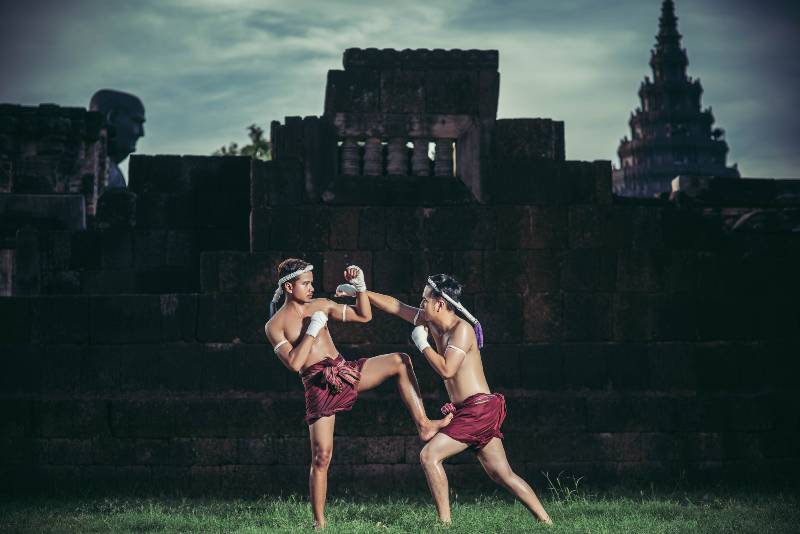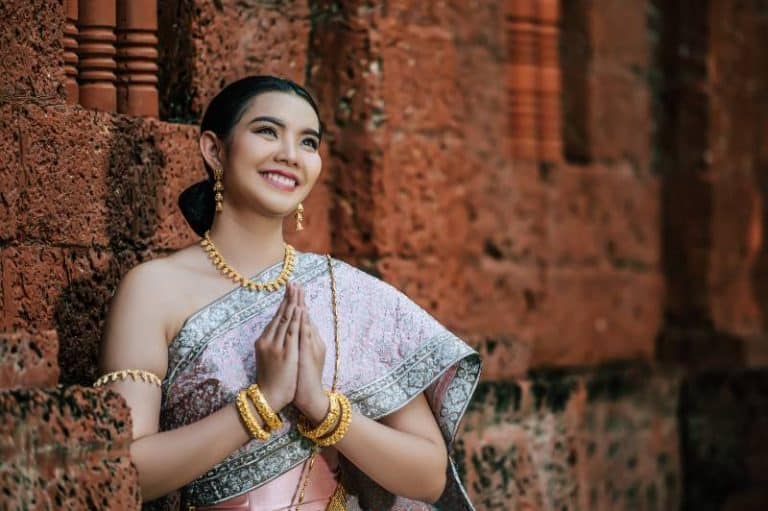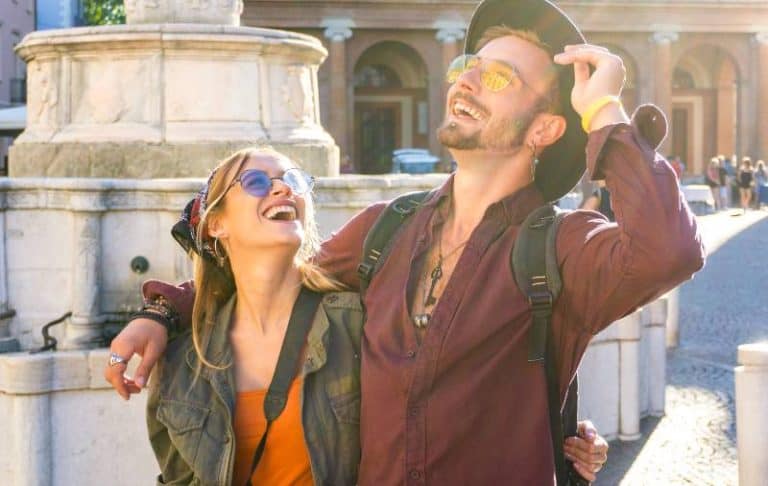More Than a Sport: Muay Thai’s Role in Thai Culture
Thai culture is a distinct and intricate part of Southeast Asian history, and within its tradition lies an important martial art: Muay Thai. Commonly known as the “Art of Eight Limbs” due to incorporating punches, kicks, elbows, and knees in fights; Muay Thai has been used in Thailand since ancient times for both sportive competitions between warriors, as well as an effective means of self-defense against enemies.
Throughout the centuries however, it has also developed into much more than just a fighting technique but has played a fundamental role in maintaining several aspects of everyday life throughout Thai history. From its solemn rituals during ceremonies to its values ingrained through generations -In this blog post we’ll make an exploration into what makes Muay Thai so unique and how it’s taken such strong root across Thailand today.
Muay Thai originated as a survival tool used by soldiers and locals to defend their lands. Even before it became a sport, Kings in ancient times were known to train in this fierce fighting style. While it later evolved into a form of entertainment, Muay Thai continued to be practiced for military training purposes even after Thailand achieved peace.
Key Takeaways
- Muay Thai isn’t just a national sport in Thailand. It’s deeply woven into the fabric of Thai society, reflecting traditional norms, values, and beliefs. The martial art is not only a symbol of national identity, but it also plays a significant role in societal structures, education, and the spiritual realm of the Thai people.
- Muay Thai goes beyond the physical domain and extends into the spiritual. Pre-fight rituals and the intimate connection with Buddhism demonstrate how the sport integrates elements of faith and spirituality, adding a unique depth to this martial art that is deeply respected within Thai culture.
- While firmly rooted in Thai tradition, Muay Thai has transcended its borders and influenced the global martial arts scene. Its techniques are widely adopted in Mixed Martial Arts (MMA), and training camps in Thailand attract foreigners interested in learning the sport.

Origin and Evolution of Muay Thai
Origins of Muay Thai
Muay Thai, also referred to as “the Art of Eight Limbs,” has deep roots in Thai culture and history, dating back several centuries. This martial art form uses eight “points of contact” – the fists, elbows, knees, and shins, in contrast to “two points” (fists) in Western boxing and “four points” (fists, feet) used in most other martial arts.
Its origins are somewhat shrouded in mystery, but historical accounts indicate that Muay Thai began as a close combat battlefield fighting skill among the ancient tribes of Thailand, used during warfare between Thai (or Siamese) and neighboring kingdoms around the 14th century. The tribes trained in this art form to protect their villages and territories from invaders. Additionally, the martial art was used by Thai soldiers during periods of war to defend the Kingdom of Siam.
In more peaceful times, it was practiced as a form of physical exercise, self-defense, recreation, and personal advancement. An interesting aspect of Muay Thai’s origin is its deep association with Buddhism and the warrior spirit. Many ancient fighters were not just warriors but monks as well, a testament to the spiritual aspect of this martial art.
Evolution of the martial art over the centuries
The evolution of Muay Thai over the centuries is fascinating and multi-faceted. During the reign of King Naresuan in the 16th century, Muay Thai began to evolve into a component of military training. It was during this period that it started gaining recognition as a practical fighting technique, as well as a spectator sport that attracted betting and served as entertainment for the spectators.
In the late 18th century, during the reign of King Prachao Sua (Tiger King), Muay Thai saw another significant development. The king, known for his love for the sport, often participated in Muay Thai matches, disguised as a commoner. His reign marked the first golden age of Muay Thai, where the art was encouraged and popularized throughout the kingdom.
Muay Thai, over time, underwent transformations in techniques, rules, and structure.
Initially, the fighters’ hands were bound with strips of horsehair or hemp rope, which was later replaced with modern gloves in the 1920s. The rules were formalized, and standard equipment was introduced, which included a boxing ring and timed rounds.
How Muay Thai Evolved into a national sport
Muay Thai’s journey from a military fighting technique to a national sport is a testament to its enduring cultural importance in Thailand. As it transitioned from the battlefield to villages and royal courts, its popularity continued to grow. The transformation of Muay Thai into a national sport began in the early 20th century.
Under the reign of King Rama VII (1925-1935), western-style boxing rings were introduced along with timed rounds, uniforms, and protective gear, including gloves. This marked a significant transition for Muay Thai as it adopted more elements of a regulated sport.
In 1930, the Department of Physical Education was established, followed by the first formal rules for Muay Thai being introduced in 1945. The codification of these rules brought about standardization in weight classes, ring size, round length, and the mandatory use of gloves.
The construction of modern stadiums like Rajadamnern Stadium in 1945 and Lumpinee Stadium in 1956 further cemented Muay Thai’s position as a national sport. These venues became the heart of professional Muay Thai, where local and international fighters would compete, making the sport an integral part of Thai cultural identity.
The role of Muay Thai in Thai culture is significant. It represents a rich tapestry woven with threads of history, bravery, spirituality, and national pride. From its inception as a military skill, it evolved into a popular form of entertainment, and eventually, a national sport that resonates with the cultural identity of the Thai people. Even today, it continues to draw fighters and enthusiasts from around the globe, fascinated by its unique blend of athletic prowess, strategic combat, and cultural significance.
Role of Muay Thai in Thai Society
How Muay Thai influences societal norms
Muay Thai has significantly shaped societal norms in Thailand, with the sport’s values and principles permeating multiple facets of everyday life. Firstly, it encourages discipline, respect, and patience, mirroring the broader Thai culture’s emphasis on politeness, deference to authority, and spiritual mindfulness.
In a Muay Thai match, for instance, it’s a common practice for fighters to display their respect to their trainers and their gym before a fight by performing the ‘Wai Kru Ram Muay,’ a traditional dance ritual. This not only serves as a warm-up but also a mark of humility and respect, embodying the societal norm of reverence to elders and those imparting knowledge.
Secondly, the sport’s competitive nature has inspired a societal norm of perseverance and hard work. Many fighters begin training at a young age, living and breathing the sport. This commitment requires a high level of discipline and dedication, qualities that are admired and encouraged within Thai society.
Influence on gender and class structures
The influence of Muay Thai extends into Thailand’s gender and class structures as well. Traditionally, Muay Thai was practiced by men. However, over time, societal perceptions have shifted, and women have gained increased acceptance within the sport. This shift mirrors the broader global trend toward gender equality and women’s empowerment.
Despite the ongoing challenges and bias that women practitioners face, their participation in this traditionally male-dominated sport challenges gender stereotypes, promotes equality, and contributes to societal change. Some prominent examples of successful female Muay Thai fighters include Sawsing Sor.Sopit and Stamp Fairtex, who have become role models for young Thai girls aspiring to take up the sport.
In terms of class structure, Muay Thai cuts across socioeconomic boundaries. It has a unique characteristic of providing opportunities for social mobility.
Historically, many fighters came from underprivileged backgrounds, using the sport as a way to support their families and move up the socioeconomic ladder. Despite the sport’s growth and increased commercialization, this trend persists today, reflecting Muay Thai’s role in providing opportunities to individuals regardless of their social status.
Muay Thai’s Role in the Thai education system
Muay Thai has found its place in the Thai education system, reflecting its importance in the cultural and social fabric of Thailand. Many schools across the country have incorporated Muay Thai into their physical education curriculum. This move not only promotes physical fitness among students but also imparts important life skills such as discipline, respect, and resilience.
Moreover, higher education institutions in Thailand, like Mahasarakham University, offer specialized courses in Muay Thai. These programs allow students to deepen their understanding of this national sport from a physical, historical, and cultural perspective.
In 2011, the Ministry of Education introduced the “Muay Thai Study for Students” program, aiming to instill discipline, enhance self-defense skills, and maintain the cultural heritage among young Thais. Additionally, scholarships are often provided to exceptional young Muay Thai fighters, allowing them to further their education while also training and competing.
In summary, Muay Thai plays a significant role in shaping Thai society. Its influence permeates societal norms, gender and class structures, and the education system, underscoring its importance in Thailand’s cultural identity and societal fabric.
Muay Thai as a Symbol of National Identity
Muay Thai’s Role in National Pride
Muay Thai serves as a profound symbol of national identity and pride for the people of Thailand. The sport, intrinsically tied to the nation’s history, heritage, and traditions, represents the Thai spirit of resilience, discipline, and honor. It’s an embodiment of Thai culture, capturing the essence of the country’s character through its unique combination of martial prowess, graceful movements, and spiritual elements.
In addition to being a popular spectator sport, many Thais see Muay Thai as a way of life. Not only does it offer a pathway for personal and societal progression, but it also fosters unity among Thais. When local fighters take on international opponents, the entire nation often rallies behind their representatives, further cementing the sport’s status as a symbol of national identity and collective pride.
Moreover, numerous national events and festivals feature Muay Thai as a key component, including the annual King’s Cup Tournament, held in honor of the Thai monarch’s birthday. These events celebrate not just the sport, but the Thai identity as a whole.
Role in International Perception of Thailand
The international perception of Thailand is inextricably linked to Muay Thai. The sport has effectively served as a cultural ambassador, showcasing Thai traditions and values to the world. As the sport’s popularity has grown internationally, so too has the awareness and understanding of Thai culture and its people.
Muay Thai’s discipline, respect, and spiritual aspects reflect broader Thai societal norms, presenting an image of a respectful, hardworking, and resilient nation to the world. It’s not uncommon for international audiences to associate Thailand with Muay Thai, signifying the profound impact the sport has had on shaping global perceptions of the country.
Furthermore, Thai fighters’ successes on international stages, such as in the ONE Championship and other global fight promotions, have bolstered Thailand’s reputation in the international arena. The respect earned by these athletes not only promotes the sport but also fosters national pride and improves the country’s image abroad.
The Sport’s Influence on Tourism
The impact of Muay Thai extends to Thailand’s tourism industry as well. With the rise of fitness tourism, Muay Thai training camps have become a popular destination for international visitors looking to learn the sport, get fit, or experience Thai culture in a unique and immersive way.
Locations like Phuket and Koh Samui, already popular for their beaches and nightlife, have seen a surge in Muay Thai tourism. Camps such as Tiger Muay Thai in Phuket and Superpro Samui in Koh Samui draw visitors from all over the world, contributing to local economies and spreading appreciation for the sport.
Additionally, traditional Muay Thai fights, held at venues like Lumpinee and Rajadamnern Stadiums in Bangkok, are high on the must-see list for many tourists. These events provide visitors with an authentic and exhilarating insight into a key aspect of Thai culture.
Muay Thai is much more than a national sport in Thailand. It is a symbol of national identity, a source of national pride, and a significant contributor to the country’s tourism industry. It also plays an instrumental role in shaping the international perception of Thailand, serving as a testament to the nation’s rich cultural heritage and resilient spirit.
The Spiritual and Ritual Aspects of Muay Thai
Exploration of the Pre-Fight Rituals
Muay Thai is heavily steeped in ritual, adding a layer of spiritual and cultural depth that extends beyond the physical confrontation. One of the most visible manifestations of this is the pre-fight rituals that fighters perform before each bout.
The “Wai Kru Ram Muay” is a dance performed by each fighter to show respect to their teachers and ancestors and to seek blessings for the upcoming fight. “Wai Kru” translates to “paying respect to the teacher,” and “Ram Muay” refers to the dance component. During this dance, fighters wear a “mongkon,” a sacred headband blessed by a Buddhist monk or the fighter’s teacher, which is believed to offer protection and good fortune.
Another crucial part of the ritual is the wearing of “Prajioud” armbands, which were traditionally made from a mother’s sarong and believed to bring good luck and protection. The fighter’s teacher or trainer removes the mongkon after the Wai Kru Ram Muay, but the Prajioud stays on throughout the fight.
The Spiritual Significance of These Rituals
These pre-fight rituals are more than mere tradition; they bear a significant spiritual weight. The Wai Kru Ram Muay is an act of respect and gratitude towards one’s teacher, a key element of Thai spiritual and cultural values. It’s a way for fighters to acknowledge the effort and knowledge imparted by their teachers, showing appreciation and acknowledging the lineage of knowledge that extends beyond the individual.
The Mongkon and Prajioud are not just accessories but are seen as spiritual armor, believed to protect the fighter from harm and ward off bad luck. This faith in spiritual protection is deeply ingrained in Thai culture, extending well beyond the realm of Muay Thai. The act of wearing these items connects the fighters to a higher spiritual realm, adding a depth of significance to their physical endeavor.
The Connection to Buddhism
Buddhism plays a central role in Thai society, and its influence can be seen in Muay Thai as well. The blessings performed by monks on Mongkons and Prajiouds imbue these items with a spiritual essence that reflects the core Buddhist values of respect, mindfulness, and the pursuit of a righteous path.
Moreover, the practice of meditation in Buddhism aligns with the mental focus required in Muay Thai. Fighters often meditate as part of their training, honing their mental strength and focus. This practice illustrates the profound connection between the physical and spiritual aspects of Muay Thai, emphasizing the balance between body, mind, and spirit.
In conclusion, the spiritual and ritual aspects of Muay Thai offer a rich, culturally immersive dimension to the sport, setting it apart from many other martial arts. These traditions contribute to the unique appeal of Muay Thai, presenting a compelling blend of athleticism, spiritualism, and cultural heritage.
Influence of Muay Thai on the Global Martial Arts Scene
Adoption of Muay Thai Techniques in MMA
Muay Thai’s influence on the global martial arts scene is quite significant, particularly evident in the realm of Mixed Martial Arts (MMA). Recognized for its effectiveness in both offensive and defensive strategies, Muay Thai techniques have been widely adopted in MMA training worldwide.
The art’s stand-up techniques, involving the combined use of fists, elbows, knees, and shins, have proven to be highly effective in the MMA arena. High-profile MMA fighters, like Anderson Silva, Jose Aldo, and Valentina Shevchenko, have used Muay Thai as a fundamental part of their striking game.
The clinch technique in Muay Thai, involving controlling the opponent’s body, especially the head, to land knee or elbow strikes or to off-balance and throw them to the ground, has also been integrated into MMA. This unique aspect of the sport provides MMA fighters with a broader set of tools, adding another layer to their combat skills.
Muay Thai’s Reputation Internationally
Internationally, Muay Thai enjoys a reputation as a highly respected and formidable martial art. Its unique combination of physical and mental discipline, strategic combat techniques, and cultural richness sets it apart in the world of martial arts.
The sport’s international status has been further elevated with the inclusion of Muay Thai in the 2023 SEA Games and its recognition by the International Olympic Committee, setting the stage for its potential inclusion in future Olympic games.
Moreover, international competitions, such as the IFMA Muay Thai World Championship and global promotions like ONE Championship, Glory, and Lion Fight, have showcased the sport and its athletes on a global stage, contributing to its growing popularity and respected status worldwide.
Training Camps for Foreigners in Thailand
The allure of Muay Thai has led to a surge in training camps designed for foreigners in Thailand. These camps offer an immersive experience, allowing visitors to learn the sport in its traditional setting and context. Camps such as Tiger Muay Thai in Phuket, Buakaw Village in Surin, and Sitjaopho in Hua Hin have become magnets for foreign students eager to learn from Thai masters in their homeland.
These training camps offer programs for various skill levels, from absolute beginners to professional fighters. They typically include rigorous training sessions, accommodation, and an opportunity to understand the culture and traditions surrounding the sport.
This phenomenon has not only fostered a broader appreciation for Muay Thai but has also provided a significant boost to local economies. As a result, Thailand has become a popular destination for martial arts tourism, further enhancing Muay Thai’s global influence.
Muay Thai’s influence on the global martial arts scene is substantial and multi-faceted. Its techniques and principles have been adopted in MMA, it has gained international reputation and respect, and its role in fostering martial arts tourism in Thailand signifies its global appeal and influence.
If you’re a fan of Muay Thai, you’ll absolutely fall in love with Discovering Thailand’s Most Beautiful Islands! Get ready to explore the breathtaking beaches, turquoise waters, and vibrant local culture. Whether you’re seeking relaxation or adventure, these islands have it all. Immerse yourself in the stunning scenery, indulge in delicious Thai cuisine, and experience the warm hospitality of the locals. Don’t miss the chance to create memories that will last a lifetime in these captivating island paradises!

The Role of Muay Thai in Thai Culture FAQs
What are the spiritual and ritual aspects of Muay Thai?
According to Muay Thai practitioners, their martial art is not just about physical combat but also encompasses spiritual elements that are deeply rooted in their sense of belonging and home. The spiritual aspects give them a sense of connection to the practice and help them feel more grounded in the activity.
How is Muay Thai related to Buddhism?
Buddhism is an integral part of Thai culture, and Muay Thai practitioners believe that its tenets are embedded in their martial art. Monks often bless items like Mongkons and Prajiouds before fights, imbuing them with spiritual energy.
How has Muay Thai influenced the global martial arts scene?
Muay Thai has been adopted in the realm of Mixed Martial Arts (MMA), with its stand-up and clinch techniques widely used by fighters. It has also gained international respect and recognition, as seen in its inclusion in the 2023 SEA Games and potential inclusion in future Olympics. Additionally, training camps for foreigners have sprung up around Thailand, further driving its global influence.
Why is Muay Thai seen as an important part of Thai culture?
Muay Thai is widely seen as an integral part of Thai culture, with many Thais viewing it as a source of pride and national identity. The spiritual and ritual components associated with it also give practitioners a sense of connection to their practice, while its physical attributes are highly respected both domestically and internationally.
What role does Muay Thai play in Thailand’s education system?
Muay Thai is becoming increasingly popular in Thailand’s education system, with schools introducing martial art into their physical education curriculums. This has allowed students to learn about Muay Thai at an early age, fostering a greater appreciation for their country’s cultural heritage.
Conclusion
The history, culture, and customs surrounding Muay Thai in Thailand are undeniably intriguing and beautiful. By delving into this martial art, which is deeply embedded in the spiritual realm of the Thai people, we find a deep connection to their history, culture, and values. Muay Thai will remain an important aspect of Thai culture for many years to come. Whether you are interested in training or simply learning more about the national sport of Thailand, its impact can be seen everywhere from schools to social media to Buddhist temples throughout the country.
I hope this post has given you some insight into the role Muay Thai plays in Thai culture and inspired you to explore it a little deeper. If you’re ready to take your journey even further, why not subscribe to our newsletter for the best information on living in Thailand?






